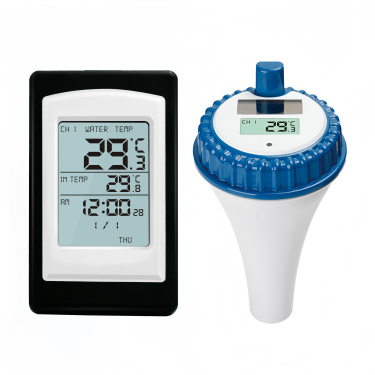
# Aquarium Thermometer: Essential Tool for Monitoring Water Temperature
## Why Water Temperature Matters in Your Aquarium
Maintaining the proper water temperature is one of the most critical aspects of aquarium care. Fish and other aquatic creatures are ectothermic, meaning they rely on their environment to regulate their body temperature. Even slight fluctuations outside their ideal range can cause stress, weaken immune systems, and potentially lead to fatal consequences.
## Types of Aquarium Thermometers
### 1. Glass Alcohol Thermometers
These traditional thermometers feature a glass tube filled with colored alcohol that expands and contracts with temperature changes. They’re affordable and accurate but can break if mishandled.
### 2. Digital Thermometers
Modern digital options provide quick, precise readings and often come with additional features like memory functions or alarms for temperature fluctuations.
### 3. Stick-on LCD Thermometers
These adhesive thermometers attach to the outside of the aquarium glass and change color to indicate temperature ranges. While convenient, they may be less accurate than other types.
### 4. Submersible Thermometers
Designed to be placed directly in the water, these provide the most accurate readings by measuring the actual water temperature rather than the glass temperature.
## Proper Placement of Your Aquarium Thermometer
For accurate readings, place your thermometer:
– Away from heaters or cooling devices
– In an area with good water circulation
– At the opposite end from your heating equipment
– At the same depth as where your fish typically swim
## Maintaining Optimal Temperature Ranges
Different species require different temperature ranges:
– Tropical fish: 75-80°F (24-27°C)
– Coldwater fish: 60-70°F (15-21°C)
– Marine reef tanks: 76-82°F (24-28°C)
Regular monitoring with your aquarium thermometer helps ensure your aquatic pets remain in their comfort zone.
## Troubleshooting Temperature Issues
If your thermometer shows abnormal readings:
1. Verify the accuracy by testing with another thermometer
2. Check heater functionality
Keyword: aquarium thermometer
3. Ensure proper water circulation
4. Consider room temperature fluctuations
5. Replace batteries in digital models if applicable
## Choosing the Right Thermometer for Your Setup
Consider these factors when selecting an aquarium thermometer:
– Tank size and type (freshwater, saltwater, reef)
– Desired accuracy level
– Ease of reading
– Durability
– Additional features (alarms, remote monitoring)
A reliable aquarium thermometer is a small investment that plays a crucial role in maintaining a healthy aquatic environment. By regularly monitoring water temperature and making adjustments as needed, you’ll create optimal living conditions for your underwater pets to thrive.